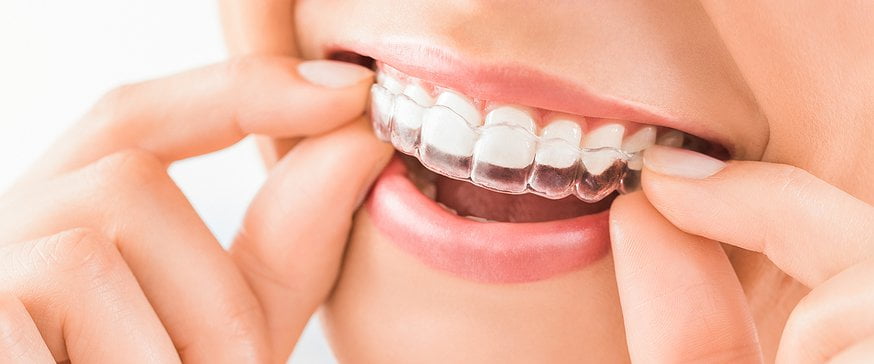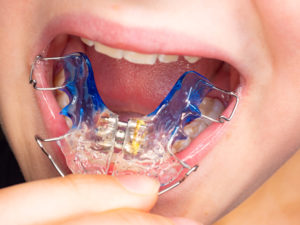Some Of All Star Family Orthodontics
Some Of All Star Family Orthodontics
Blog Article
What Does All Star Family Orthodontics Mean?
Table of ContentsAll Star Family Orthodontics Fundamentals ExplainedFacts About All Star Family Orthodontics UncoveredAll Star Family Orthodontics - The FactsAll Star Family Orthodontics Can Be Fun For AnyoneThe Definitive Guide to All Star Family Orthodontics

At Advanced Orthodontics, we provide people with a all natural therapy experience. In addition, we provide flexible therapy timetables, flexible payment options and an enjoyable, pleasurable experience - old bridge orthodontist. Telephone call ( 480) 357-4900 today for additional information and timetable a visit.
An orthodontist is a dental professional trained to diagnose, protect against, and deal with teeth and jaw abnormalities. Orthodontists work with people of all ages, from kids to adults.
Malocclusion, or misaligned teeth, can bring about oral concerns, consisting of tooth degeneration, gum disease, and challenging or excruciating eating. Not everyone is birthed with straight teeth. If you have a bad bite or large rooms in between your teeth, you might desire to speak with a dental expert focusing on orthodontic care.
All Star Family Orthodontics Things To Know Before You Buy
(Picture Debt: DigitalVision/Getty Images) Orthodontists utilize taken care of and removable dental gadgets, like braces, retainers, and bands, to alter the placement of teeth in your mouth. Orthodontic treatment is for dental irregularities, consisting of: Crooked teethBite problems, like an overbite or an underbiteCrowded teeth or teeth that are as well far apartJaw misalignmentThe goal of orthodontic therapy is to improve your bite.
A healthy bite ensures you can eat, eat, and talk appropriately. While you could think about orthodontists as mainly for youngsters or young adults that need braces, they can deal with oral problems at any type of age. Orthodontists attend college, dental college, and orthodontic college. After college graduation, they spend 2 or 3 years in an orthodontic residency program.
, however not all dentists are orthodontists. They concentrate on two locations: Exactly how to correctly and securely move teeth How to appropriately lead growth in the teeth, jaw, and faceOnce an orthodontist has completed training, they have the choice to end up being board certified.
How All Star Family Orthodontics can Save You Time, Stress, and Money.
Misalignment, or malocclusion, is the most typical factor people see an orthodontist. It is hereditary and is the result of dimension distinctions in between the top and reduced jaw or in between the jaw and teeth. Malocclusion causes tooth overcrowding, a twisted jaw, or uneven bite patterns. Malocclusion is typically treated with: Your orthodontist affixes metal, ceramic, or plastic square bonds to your teeth.
If you have only minor malocclusion, you may have the ability to utilize clear braces, called aligners, as opposed to standard braces. Some people require a headgear to help move teeth right into line with stress from outside the mouth. After braces or aligners, you'll need to put on a retainer. A retainer is a custom-made device that maintains your teeth in place.

You may need to see an orthodontist if you have: Crowding or otherwise sufficient space for every one of your teethOverbite, when your top teeth come your base teethUnderbite, when your bottom teeth are also far forwardSpacing or problems with gapsCrossbite, which is when your upper teeth fit behind your bottom teeth when your mouth is closedOpen bite or an upright void in between your front bottom and top teethMisplaced midline, when the center of your bottom and upper teeth don't line up Dealing with a dental malocclusion can: Make biting, chewing, and speaking easierImprove the balance of our face and your total appearanceEase pain from temporomandibular joint disordersDifferent your teeth and make them you can try here less complicated to clean, helping stop dental caries or tooth cavities It's commonly a dental expert that initially notifications misaligned teeth during a regular test.
The Single Strategy To Use For All Star Family Orthodontics
During your initial orthodontic examination, you'll likely have: A dental examPhotos taken of your face and smileDental X-raysPanoramic (360 level) X-rays of your face and headImpressions to develop molds of your teethThese tests will assist your orthodontist recognize just how to proceed with your therapy. An orthodontist is a dental professional who's had training to treat your teeth and jaw.
Orthodontists are dental practitioners yet not all dental practitioners are orthodontists. Orthodontists are concentrated on your bite, or the way your teeth fit with each other, and the straightness of your teeth.

By diligently assessing these elements, the orthodontist can identify any type of imbalances, crowding, spacing concerns, or jaw discrepancies. Once a clear image is established, the orthodontist will talk about tailored therapy alternatives.
The Buzz on All Star Family Orthodontics
While braces are the most frequently recognized orthodontic treatment, orthodontists have a varied toolkit at their disposal. The certain method chosen relies on the extent of the situation, the individual's age, and individual preferences. These tried-and-true dental braces use a system of braces bonded to the teeth and connected by cables.
Clear aligners, like Invisalign, are a popular choice for individuals seeking an extra discreet therapy choice. These detachable trays are personalized to considerably move the teeth's position. Headgear may be used combined with dental braces or aligners to use added targeted pressures, particularly for dealing with jaw inconsistencies. In cases of narrow jaws, palatal expanders can be used to produce area for proper tooth placement.
Report this page